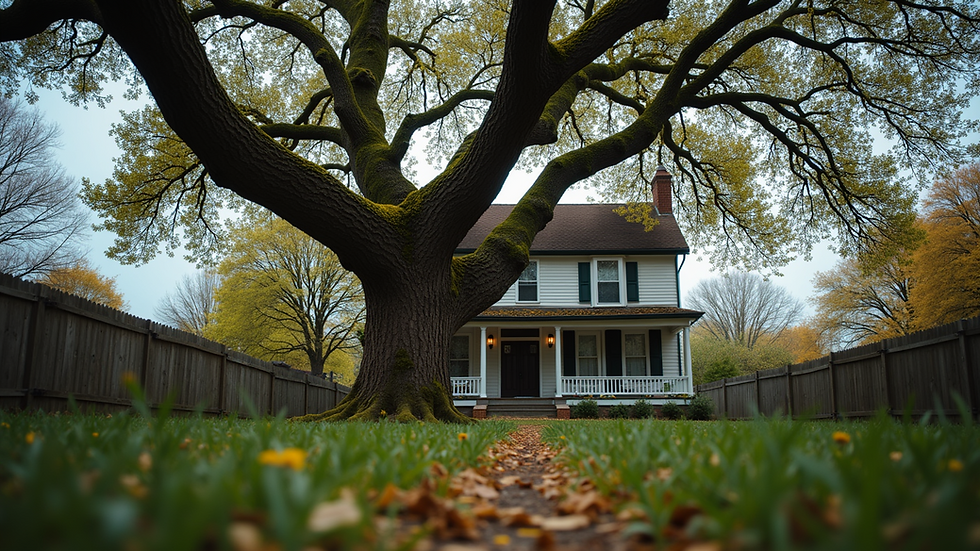How to Plant Trees and Shrubs the Right Way (From an ISA-Certified Arborist)
- Michael Shults
- Apr 20
- 3 min read

By Michael Shults, ISA-Certified Arborist & Owner of Shults Tree Service – Louisville, KY
Spring’s here, and everybody’s rushing to the garden center like it’s Black Friday. I get it—fresh trees and plants bring life to a yard. But here’s the truth most folks don’t want to hear: planting wrong kills more trees than storms, bugs, or disease. And most of the time, it’s human error.
If you're going to spend good money on a tree or shrub, do it right the first time—or don’t bother. As an ISA-Certified Arborist, here’s what actually matters when it comes to planting.
1. Pick the Right Tree for the Right Spot
Stop planting the wrong tree in the wrong place.
Sun vs. Shade: Know what the species needs. Cramming a full-sun tree in a shaded yard is a waste of time.
Soil Drainage: Clay-heavy? Sandy? Poor drainage kills roots fast. Do a simple hole-water test and watch how it drains.
Mature Size: That little sapling will be 40 feet tall and smashing gutters in 10 years. Plan for the full-grown tree.
2. Don’t Plant Too Deep (Most People Do)
Golden rule: Root flare should be visible above ground. Always.
The “root flare” is the base of the trunk where it spreads into roots. Bury that, and you’re basically slow-choking your tree. Dig wide, not deep. Hole should be:
As deep as the root ball
2–3x wider than the container or root mass
No flare showing = no oxygen = girdling roots = early death.
3. Fix the Roots Before Planting
Container trees are a mess most of the time. Roots spiral, kink, and choke themselves.
Bare-root it if needed: Remove the pot, shake off loose soil, expose the structure.
Cut circling or matted roots: Use a sharp blade, don’t baby it. You’re saving the tree from strangling itself.
This is where arborists separate from landscapers—we care about long-term survival, not just “sticking it in the ground.”
4. Backfill With Native Soil (Not Fancy Bags)
Here’s where people waste money: bagged topsoil, compost, peat mixes… skip it.
Use the same dirt you dug out.
Break up chunks and backfill evenly.
Amendments can backfire, causing water to collect in the hole like a bathtub.
If your soil sucks, fix the site, not just the hole.
5. Mulch Like a Pro (Not a Volcano)
You’ve seen it—mulch piled like a volcano around the base. It traps moisture, invites fungus, and kills bark.
Keep mulch 2-3 inches deep.
Pull it back 3-6 inches from the trunk.
Use real wood mulch if possible, not rubber junk.
Mulch conserves moisture and prevents weeds—when done right.
6. Skip the Stake—Unless It’s Actually Needed
Staking is mostly done wrong or overused. Only stake if:
Tree can’t stand up on its own.
Site is super windy or exposed.
Use soft, flexible ties, and remove stakes after one season.
Let the tree move naturally—it builds real strength in the trunk.
7. Water Deep and Infrequently
Forget shallow daily sprinkles. Trees need deep, slow watering.
5–10 gallons per week for young trees.
Water at the drip line, not right at the trunk.
Skip watering if soil is already moist 4–6" down.
Overwatering is just as deadly as drought.
Final Thoughts
Most of the trees I remove were planted wrong. Not sick, not storm-damaged—just doomed from day one because somebody didn’t know what they were doing.
If you want trees that actually thrive for decades, not just survive a few seasons, follow these steps or hire someone who does. Better yet, get a consult with an ISA-Certified Arborist before you plant. It'll save you money, time, and regret.






Comments